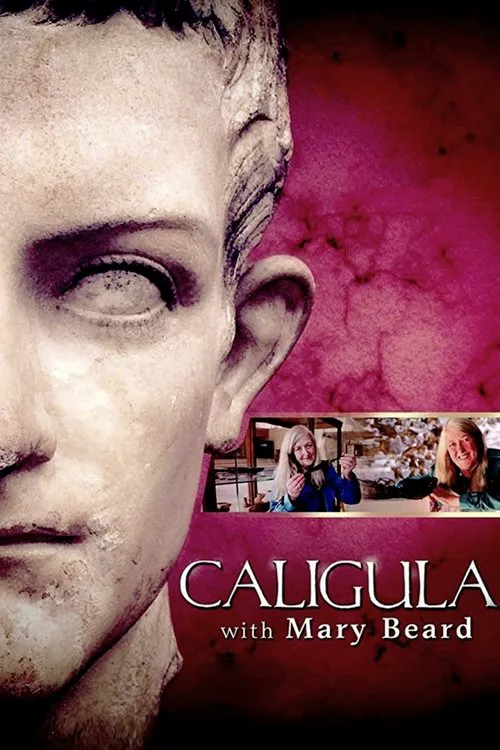Caligula with Mary Beard

Plot
The infamous Roman Emperor Caligula, a figure who has captured the hearts and minds of historians and the general public alike for centuries. His reign, which lasted a mere four years, has been shrouded in mystery, scandal, and controversy, leaving behind a legacy of intrigue and myth. From the moment of his birth to the brutal end of his life, Caligula has been a subject of fascination and fascination, with most stories and accounts of his life veiled in an aura of uncertainty. It is here that the renowned historian and scholar, Professor Mary Beard, steps in to unravel the tangled threads of fact and fiction, separating the truth from the legend to shed light on the real Caligula. At the heart of the problem lies the question: was Caligula a cruel, sadistic, and erratic tyrant, as the ancient Roman historians, such as Tacitus and Suetonius, have portrayed him? Or was his image manipulated and distorted by those with a vested interest in his downfall, as Beard suggests? To answer this, it's essential to understand the historical context of the time and the role of the Roman historians who wrote about him. Caligula, born Gaius Julius Caesar Augustus Germanicus, was the great-nephew and adopted son of the revered Emperor Tiberius. Upon Tiberius's death in 37 AD, Caligula succeeded him, becoming one of the most infamous Roman Emperors in history. During his brief reign, Caligula's behavior was marked by extravagance, extravagance, and what some have seen as a descent into madness. According to the Roman historians, Caligula was known for his reckless spending, wild parties, and extravagant public displays of wealth. He allegedly spent enormous sums of money on lavish architecture, elaborate games, and theatrical performances, including the construction of a floating bridge across the Bay of Baiae. These excesses were said to have driven Rome to the brink of bankruptcy, leading to a severe economic crisis. Moreover, Caligula was accused of engaging in bizarre and depraved behavior, such as marrying his sisters, holding orgies in the palace, and encouraging the worship of the gods in his own person. Some accounts even suggest that he became increasingly paranoid, ordering the executions of his own friends and family members on trumped-up charges. However, as Professor Beard aptly points out, much of what we know about Caligula comes from the writings of Tacitus and Suetonius, who were both hostile towards him. Tacitus, in particular, was known for his scathing criticism of the Roman Emperors, including Caligula. Beard argues that these historians had a vested interest in portraying Caligula as a monster, as a way of justifying their own negative views of the Roman state and the imperial system. Beard suggests that the Roman historians were influenced by the idea of the "bad prince," a trope common in the literature of the time. This mythological figure was seen as a cautionary tale, highlighting the dangers of unchecked power and the consequences of royal excess. By portraying Caligula as a brutal tyrant, the historians hoped to warn their readers about the perils of imperial power and the importance of moral behavior. Furthermore, Beard points out that the Roman historians often relied on hearsay and rumor to construct their portraits of Caligula, without critically evaluating the evidence. This has led to a situation where the facts about Caligula's life are shrouded in a fog of myth and legend, making it difficult for historians to separate the truth from the fiction. In exploring the truth about Caligula, Beard draws on a range of sources, including archaeological evidence, coinage, and inscriptions. She points out that many of the stories about Caligula's extravagance, for example, are likely exaggerated or fabricated. The Roman historians were known for their love of sensationalism, and Beard argues that they often used Caligula's name to illustrate their points about the dangers of tyranny. Despite this, Beard does not dismiss the idea that Caligula was a complex and flawed individual. She suggests that he may have been a charismatic leader who was genuinely committed to implementing significant reforms, such as increasing the power of the Roman Senate and promoting welfare programs for the poor. However, his impulsive and volatile nature may have led him to make rash decisions that ultimately contributed to his downfall. Ultimately, the story of Caligula serves as a reminder that history is often a subjective interpretation of the evidence, shaped by the biases and agendas of the historians who wrote about it. Professor Beard's insightful analysis shines a light on the problematic nature of the Roman sources, revealing that much of what we know about Caligula may be based on myth and legend rather than fact. As Beard so astutely observes, the real Caligula remains an enigma, a figure shrouded in mystery and controversy. While we can separate the truth from the fiction, it's essential to recognize that even the most seemingly objective accounts of history are open to interpretation and revision. By examining the Roman historians' accounts with a critical eye, we may gain a more nuanced understanding of Caligula and his place in history, shedding light on the complexities of the past and the enduring impact of the Roman Empire's legacy on our understanding of politics, power, and human nature.
Reviews
Recommendations




